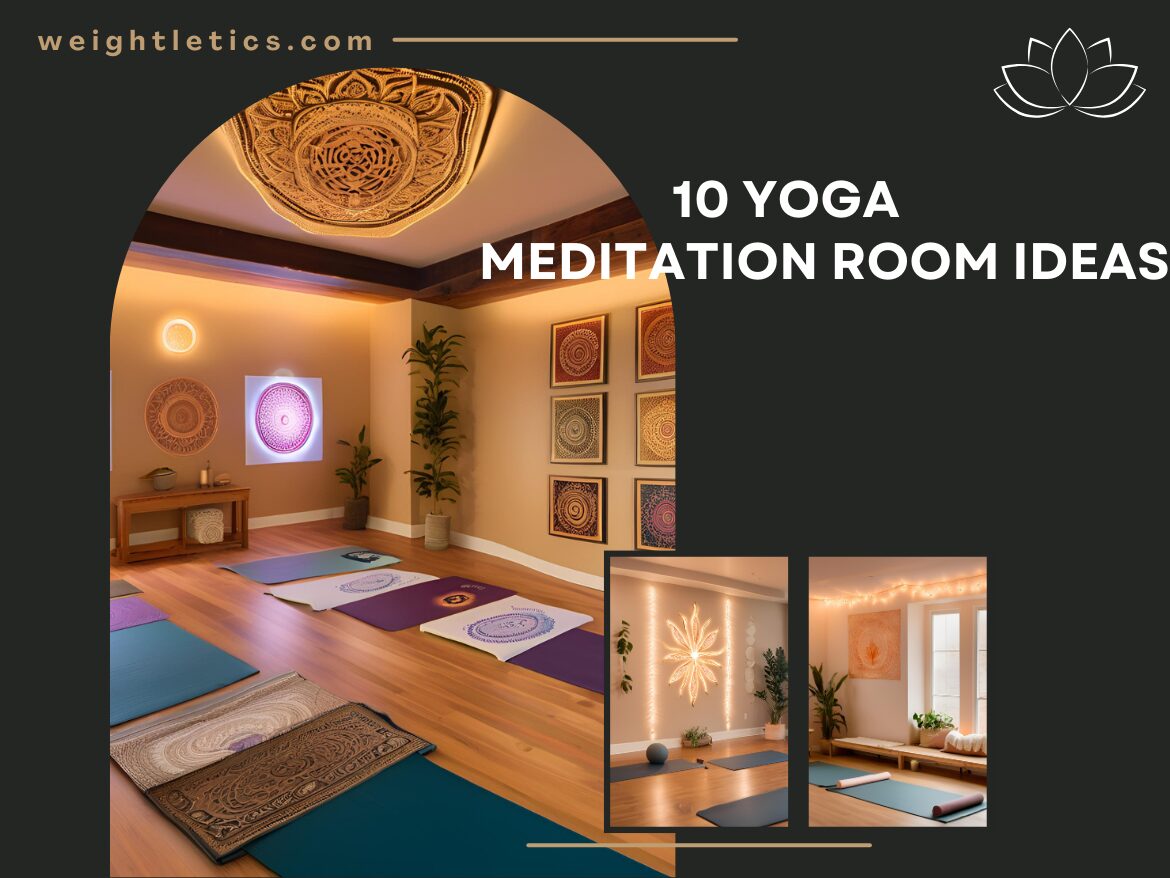Creating a dedicated yoga meditation room in your home can be a transformative experience, offering a peaceful sanctuary where you can unwind, recharge, and find balance amidst the chaos of daily life. In this blog post, we will explore the essential elements needed to design a tranquil space that fosters mindfulness and enhances your yoga practice. From selecting the perfect location and incorporating calming colors, to choosing the right accessories and aromatherapy, we’ll guide you through the process of crafting a personalized oasis that resonates with your unique style and promotes inner harmony. Whether you’re an experienced yogi or just beginning your journey, a thoughtfully curated yoga meditation room can become a cornerstone of your holistic well-being.
Creating Your Perfect Meditation Room: Setup Essentials
1.Choose a quiet, secluded space in your home
Selecting a spot that offers silence and solitude is a game-changer for your meditation space. Think about areas in your home that naturally lend themselves to peace—maybe an unused room or a quiet corner.
2.Consider the room’s lighting and acoustics
Lighting plays a big role in setting the mood. Soft, natural light is ideal, but if that’s not an option, go for adjustable lamps with warm bulbs. The goal is to keep the vibe calm and soothing.
3.Importance of furniture and floor ground
What you’ll sit on matters more than you might think. Meditation mats or cushions are not just for comfort; they help you maintain proper posture and extend the time you enjoy being in the zone.
4.Incorporating aromatic elements
Incorporating aromatic elements can elevate the sensory experience. A little incense or essential oils can help center your focus and signal that it’s time to relax.
5.Tech-free zone guidelines
Creating a tech-free zone is crucial. This means keeping smartphones, laptops, and anything else that pings or buzzes out of the space. The aim is to minimize distractions and optimize your headspace.
Decorating Your Yoga Meditation Room: Crafting a Serene Environment
Choosing the right colors sets the mood. Soft blues, greens, and earth tones are known to promote relaxation. These shades create a backdrop that’s both calming and conducive to introspection.
Nature-inspired decor is your best friend. Adding plant life isn’t just visually appealing; it boosts air quality, which can help deepen your breathing during meditation. Think succulents if you’re short on time, or leafy plants for a more lush feel.
Personal spiritual symbols can add a layer of meaning and connection. Whether it’s a small statue, a gemstone, or a tapestry depicting a scene that speaks to you, these elements make the space uniquely yours.
Fabrics are fantastic for introducing texture and privacy. Consider light, airy materials for curtains or drapes. They add a sense of enclosure that can be comforting and block out any unwanted noise from the rest of your house.
Thoughtfully placed artwork and visual elements can inspire calm. Maybe it’s a peaceful landscape or abstract art in muted tones—whatever resonates with you on a personal level. The goal is to create a space that visually whispers tranquility.
10 Yoga Meditation Room Ideas to Inspire Your Zen Space
Mixing minimalism with functionality is a great approach when designing your meditation room. Less is definitely more in this scenario, helping your mind to unclutter.
Soundscapes can completely transform the atmosphere. Consider integrating calming sounds like waterfalls, birdsong, or soft instrumental music to enhance the experience.
Multipurpose furniture is genius for those working with limited space. Think ottomans that double as storage or foldable mats that can be tucked away when not in use.
If you love themes, explore creating a meditation room with its own unique flair. Whether you dig an Asian Zen vibe or a Modern Boho aesthetic, make it true to your personal taste.
Creating an outdoor meditation nook is bliss if you have the garden space. Nature itself becomes your decor, and the open air can amplify your relaxation journey.
To add an element of surprise, use rugs to define the space. They’re practical for protecting floors while adding warmth and comfort underfoot.
Consider low shelving to display items that bring you joy—a collection of books, small sculptures, or any items you find meaningful.
A hanging chair might be the wild card you need. It can become a cozy corner for reflection without taking up much space.
Experiment with lighting styles, from fairy lights to lanterns, to craft a mood that’s soulful yet functional.
Finally, wall decals or murals can offer visual stimulation or serve as a mantra to keep you inspired during your sessions.
Fun Facts About Meditation Rooms: Insights to Inspire
Many cultures have long histories of dedicated spaces for meditation and contemplation, highlighting the universal appeal of creating a sanctuary for the mind.
Some of the world’s most iconic meditation rooms, like the one in the United Nations Headquarters, serve as hubs of tranquility in bustling environments.
Meditation rooms have evolved remarkably, from ancient caves to modern minimalist spaces, reflecting changes in architecture and lifestyle needs over the centuries.
Science backs the benefits of having a dedicated space for meditation, noting improvements in stress reduction, concentration, and even mental health outcomes.
Statistics show a rising trend in meditation practices, not just as a personal journey but as a mainstay in homes and workplaces, emphasizing its growing acceptance as a wellness tool.
Frequently Asked Questions
Q1: What should I avoid when setting up a meditation room?
Avoid cluttering your yoga meditation area, as too much stuff can distract your focus and clutter your mind. Aim for simplicity and select only what adds real value to your practice.
Q2: How much space do I need for a yoga meditation room?
Space doesn’t have to be vast. Even a small corner dedicated to meditation can be effective, proving it’s more about intention than square footage.
Q3: Can a meditation room be used for other activities?
Yes, your yoga meditation room can double up for other peaceful activities like reading or pilates, as long as these practices don’t disrupt the aura you’ve built.
Key Takeaways
Remember, the core benefits of a dedicated meditation space include increased focus, enhanced mental clarity, and a sense of peace, all invaluable for personal growth.
In personalizing, the most significant takeaway is to make sure the space feels like a true extension of yourself. This connection enhances the space’s ability to provide comfort and inspiration.
If you like this post, you may also like “Yoga Routine For Weight Loss“



